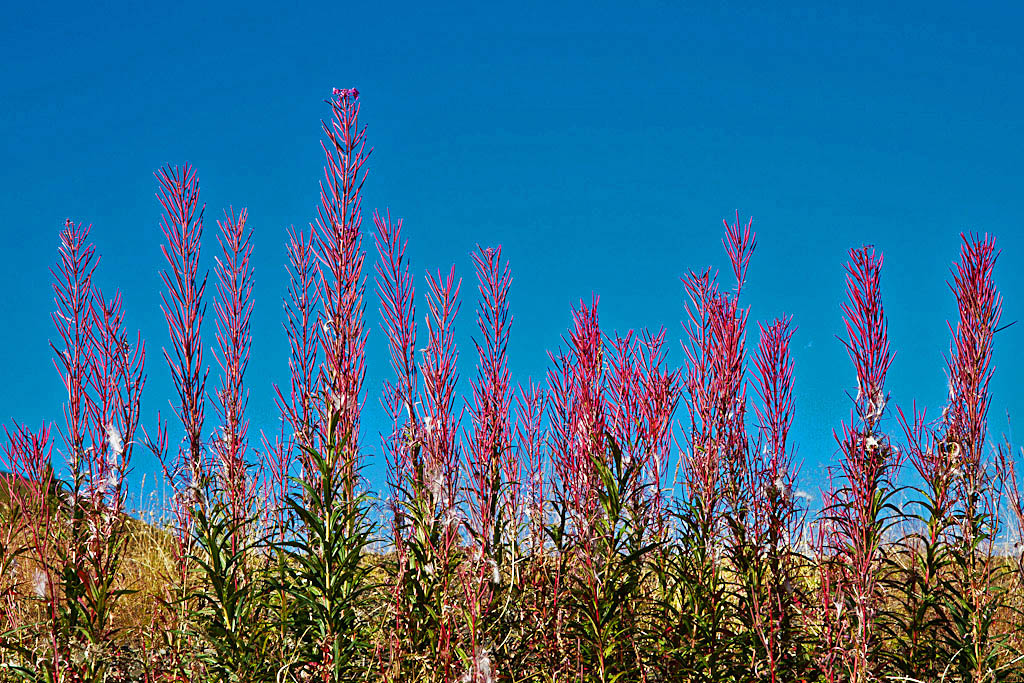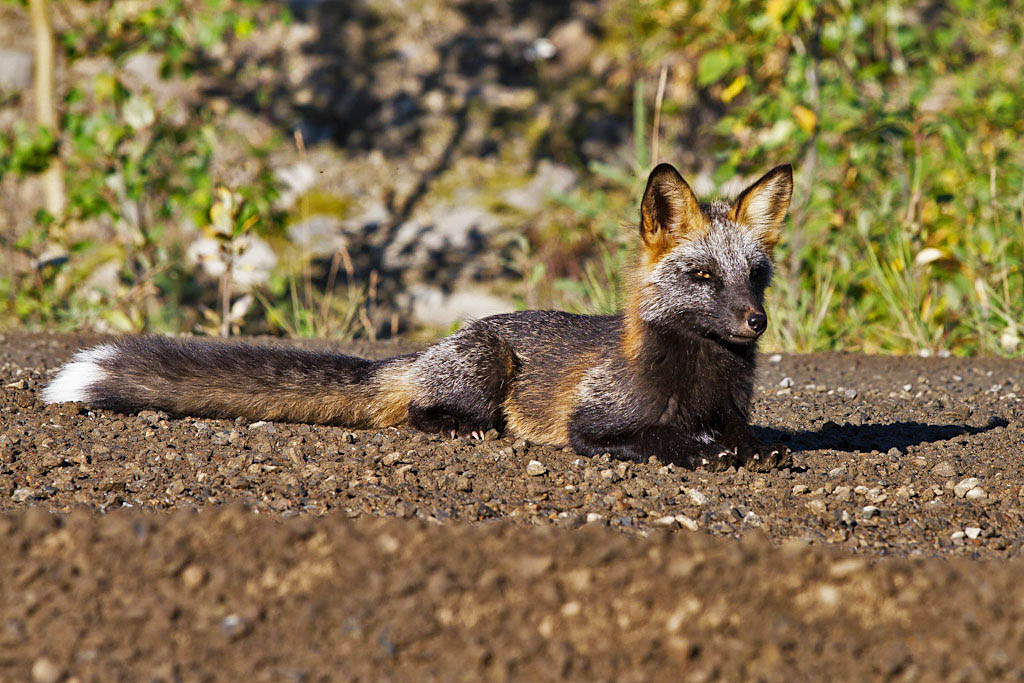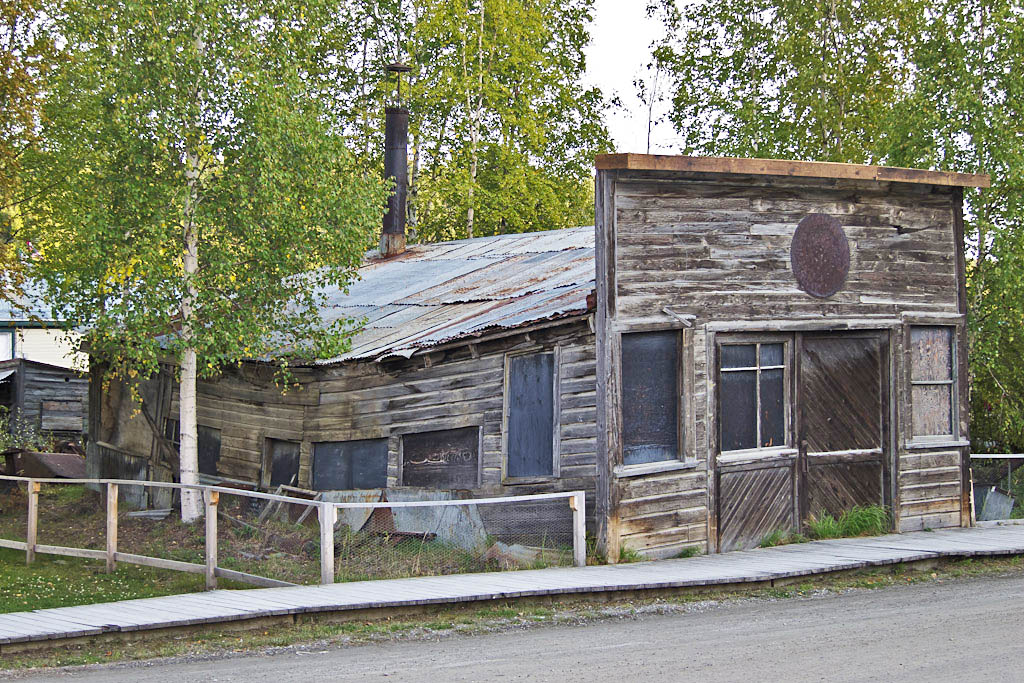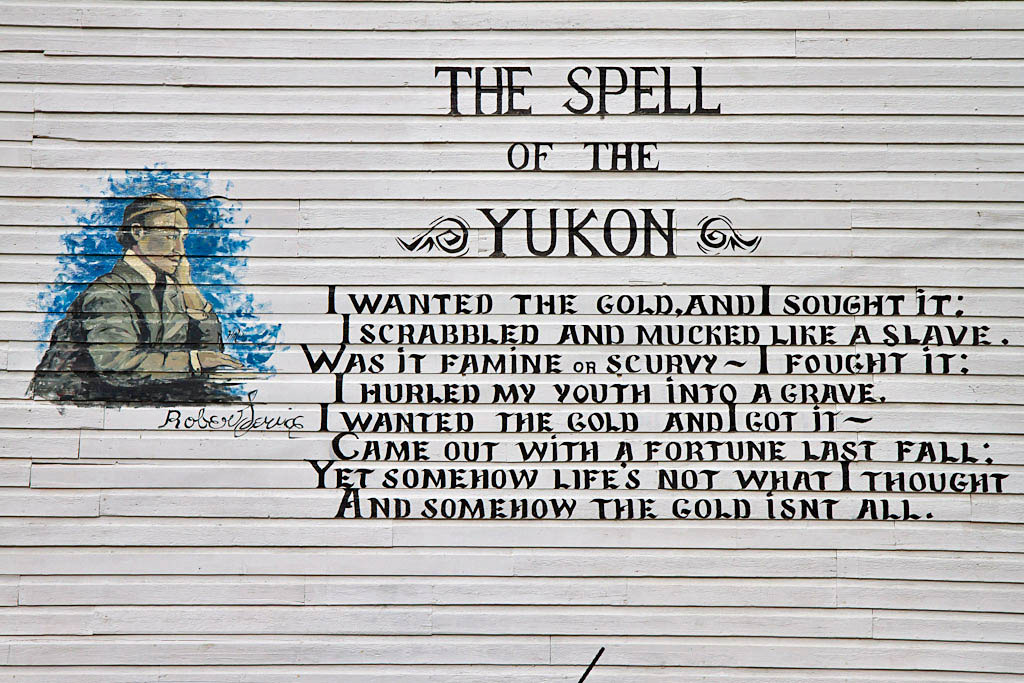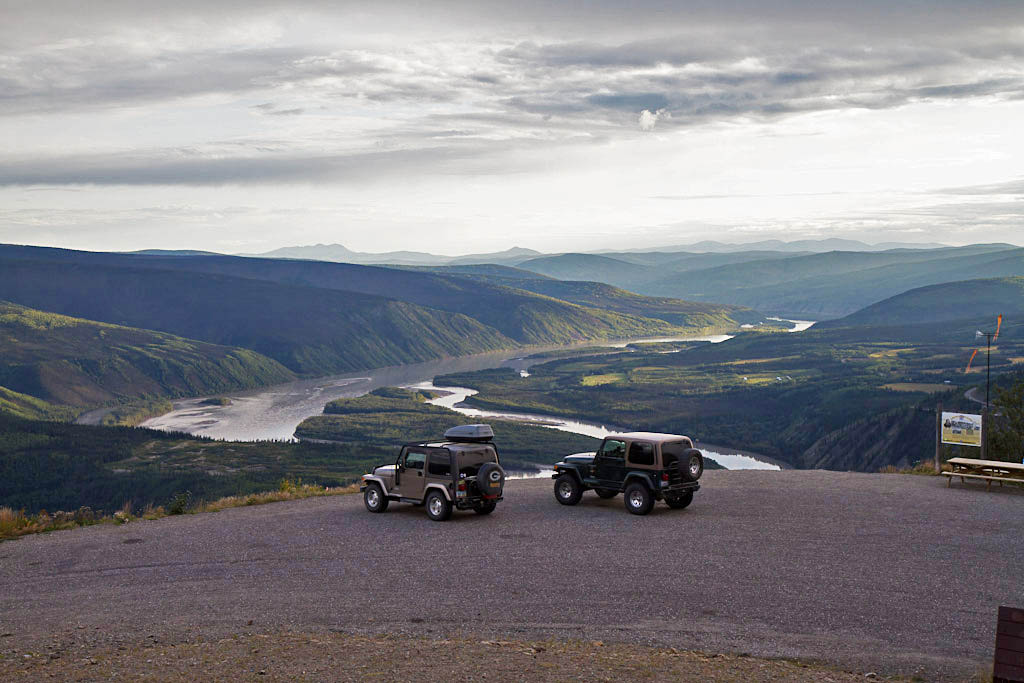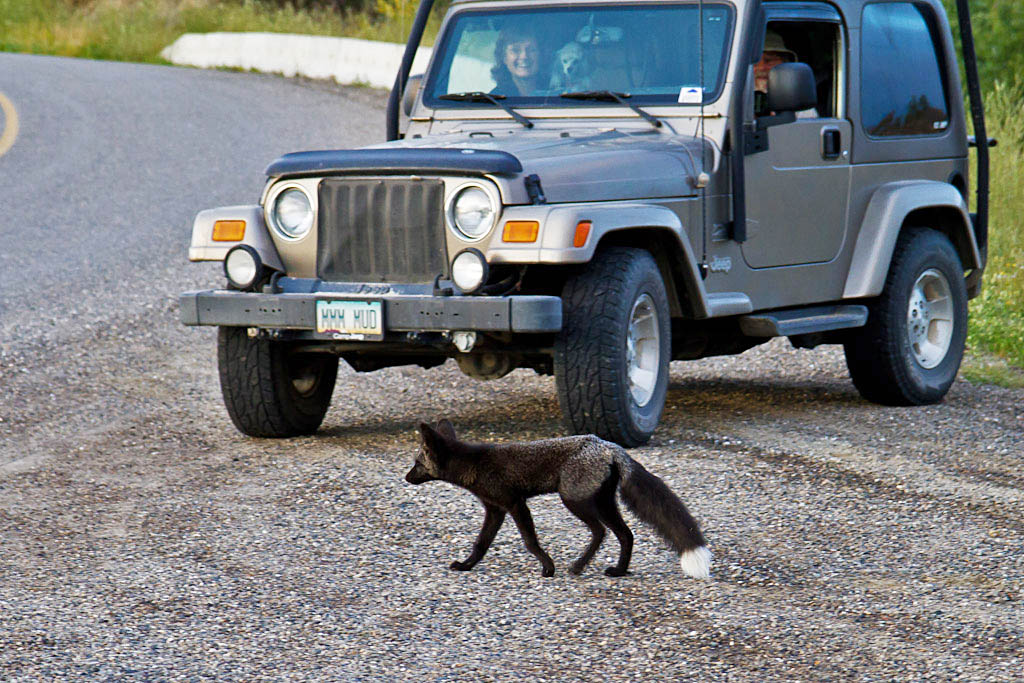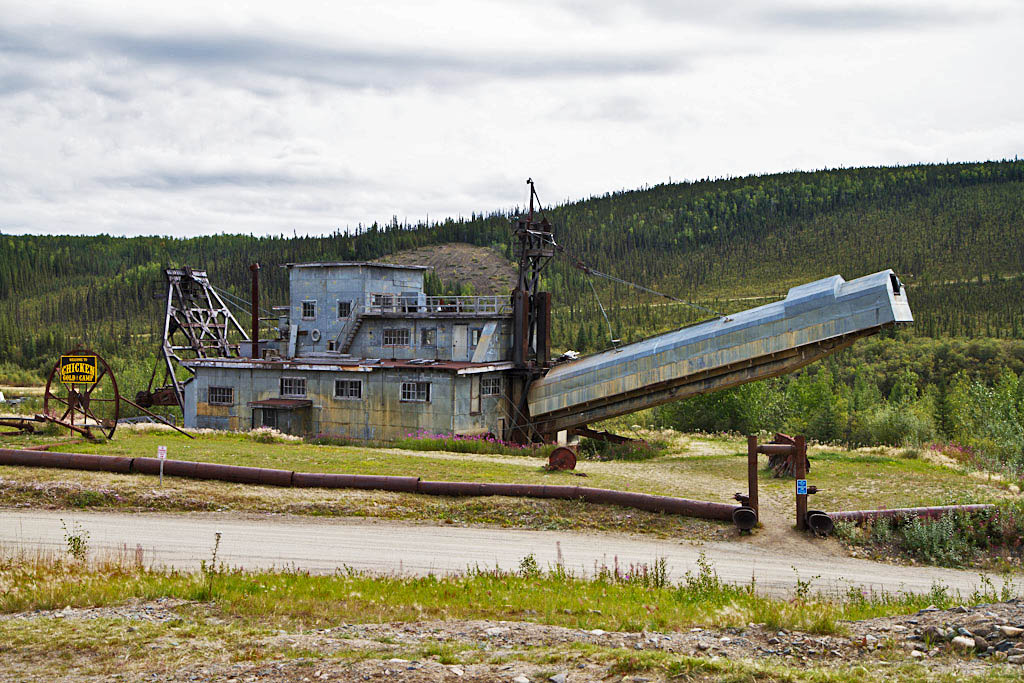After driving across the Top-of-the-World highway, we spent a few days in Dawson, in the Yukon Territory. Dawson primarily exists because of gold mining. The famous Klondike gold rush of 1896 was set off by gold discoveries in nearby creeks. Being at the confluence of the Yukon and Klondike Rivers, Dawson was a natural hub for the gold mining activity.
Like much of the northern interior, Dawson sits on an area of permafrost (a layer of permanently frozen soil). When a heated building is placed directly on such ground, over time the heat from the building causes the permafrost layer to start melting, creating an unwanted quagmire under the building.
For a number of years Dawson was also the home of American poet Robert Service. Service used the Yukon and the Klondike gold rush as subjects for many of his poems.
The cabin Robert Service lived in is now owned and managed by Parks Canada.
This fellow gave a great talk about the life of Robert Service at the cabin.
Right behind the city rises a hill called Midnight Dome, with a paved road leading to the top. We watched the sun setting from there one evening.
Gold dredges worked most of the streams near Dawson. The largest such dredge in North America was the Yukon Consolidated Gold Company's dredge No. 4. This one dredge mined nearly 9 million dollars of gold between 1913 and 1959. Dredge No. 4 was acquired by Parks Canada for public tours and display.
We came across this black furred variant of a red fox that seemed extremely comfortable with people and vehicles.








